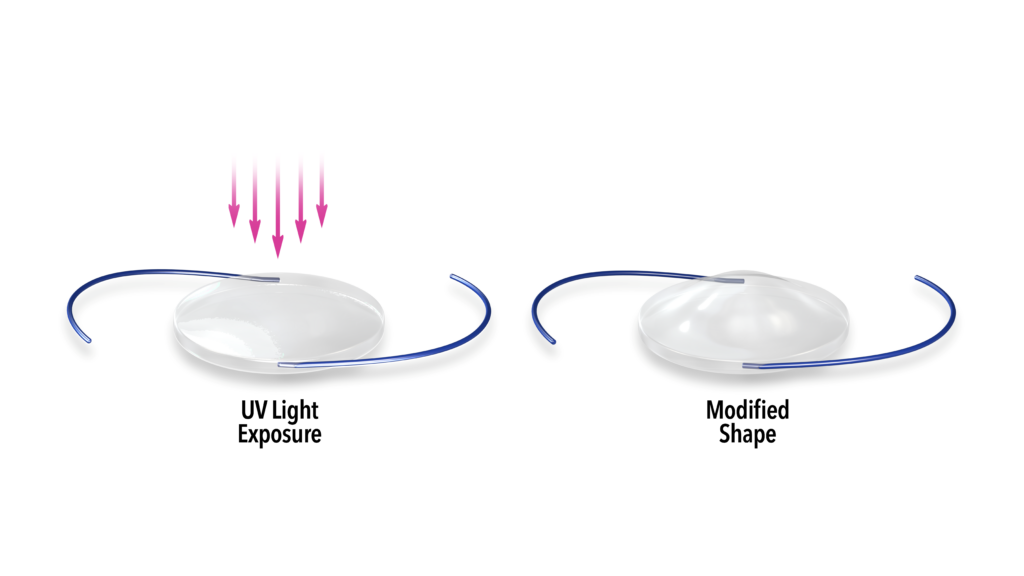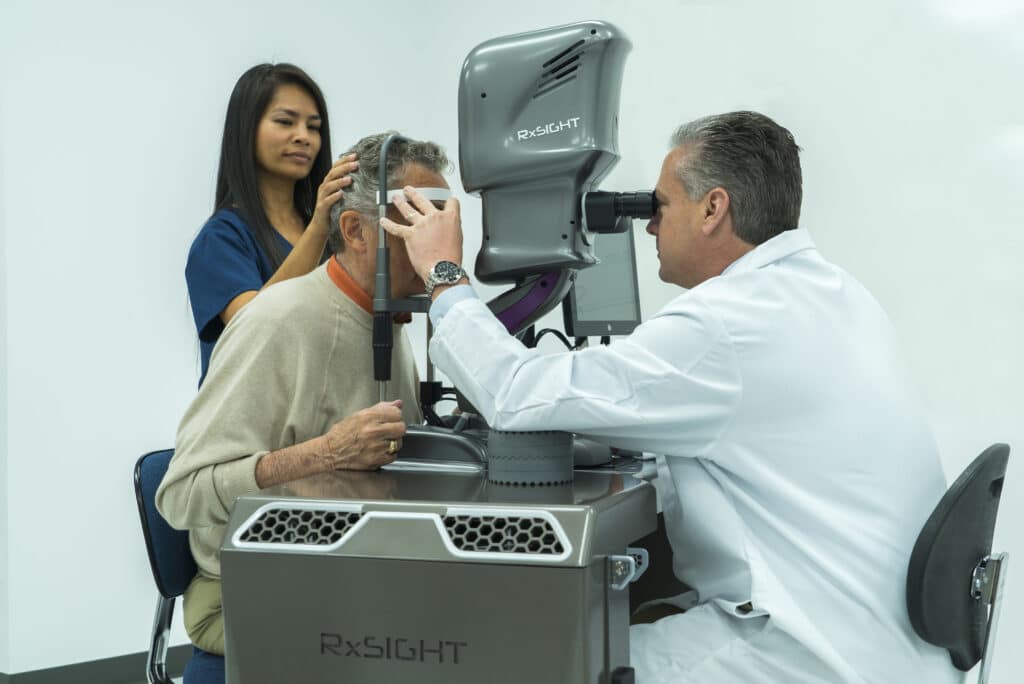Cataracts are a clouding of the natural lens inside the eye.
Most of the time, cataracts develop slowly over the years. You may not even notice you have them until they start to block light from your vision. If you have any concerns about your vision being affected by cataracts, schedule a cataract consultation today with Updegraff Laser Vision, serving patients in St. Petersburg, Tampa, and the surrounding areas.

Cataracts are typically part of the natural aging process. Almost everyone will develop a cataract at some point in life.
There are factors which have been proven to increase the likelihood of developing cataracts. These include smoking, diabetes, obesity, high blood pressure, and use of steroid medications.
As always, it is best to consult your eye doctor regularly for signs of cataract development. If you have concerns that you may be developing cataracts, contact us here at Updegraff Laser Vision. Dr. Updegraff and his team of experienced cataract surgeons will diagnose any conditions you have and treat accordingly.
Cataracts can create symptoms including:






Cataract surgery involves removing the cloudy natural lens and replacing it with a clear lens implant. To do this, the cataract surgeon will first create a microscopic opening in the cellophane-like bag that holds the natural lens in place. The surgeon will break up the cataract using a machine that generates ultrasonic waves, and remove it through a tiny incision in the cornea.
Once the cataract has been removed, your cataract surgeon will fold up the replacement lens – called a lens implant – and use a tube to place it in the front of the eye. The new lens then opens like a flower in the position where your natural lens previously rested.
If you think you might need cataract surgery, the first step is to have a comprehensive eye examination. Your doctor will be able to determine if a cataract is the cause of your decreased vision. If it is, and if it is inhibiting your quality of life and your daily activities, then our surgeons can help you determine which cataract surgery option is best for your eyes and lifestyle.
The most recent breakthrough in cataract surgery is the introduction of the cataract laser. With this type of cataract surgery, we are able to obtain highly detailed information about your eye and lens. This allows for precise location and size and depth of the incisions. The laser is also used to help soften the cataract for easier removal.
The primary benefits of laser-assisted cataract surgery is our ability to increase the accuracy of our visual outcomes and shortened the surgery time.
The Light Adjustable Lens™ (LAL®) is the first and only lens that can be customized after cataract surgery—because we believe your vision should be exactly what you want. Now you can experience your vision, then refine it. So your vision will truly be yours.
With other lenses, you have to make a lot of decisions about the vision you want before your cataract surgery. Once implanted, those lenses can’t be changed; they’re what’s known as “fixed.” The Light Adjustable Lens, however, is an adjustable lens. This means that the only decision you have to make before your surgery is to choose the Light Adjustable Lens. The rest can be made after your surgery once your eye has healed. You and your surgeon then have the ability to adjust the lens and optimize your vision based on your unique preferences and lifestyle requirements. So you will truly have vision that is just for you.
The Light Adjustable Lens is made of a special photosensitive material that changes the shape and power of your implanted lens in response to ultraviolet (UV) light to optimize your vision.
The Light Delivery Device (LDD) non-invasively delivers this UV light to precisely reshape your lens based on the visual correction that is needed to target your custom prescription.


About three weeks after your cataract surgery, you’ll visit your doctor’s office to begin the light treatments to customize your vision. During these visits, you and your doctor work together to achieve the best possible visual outcome—the vision that’s best for you and your lifestyle.
Studies have shown that patients who received the Light Adjustable Lens and the recommended post-surgery treatments were almost twice as likely to achieve 20/20 vision or better without glasses compared to cataract patients who have standard lens implants.
While your vision is still in the adjustment phase, you will be required to wear glasses that prevent UV light from altering your lens to protect it before the final lock-in.
No, if both eyes require surgery, they are typically performed 1-2 weeks apart.
You will usually be at the surgery center for about 2 hours, but on average the surgery only takes about 10 minutes.
No, general anesthesia is not necessary to perform cataract surgery. You will receive a light sedation to help you relax. Although you will still be awake, most patients will not remember the surgery.
No. Eye drops are used to numb the eye. Patients feel pressure on the eyelids, cool fluid, and see a ring of lights.
Many will feel comfortable driving, but there are also many who may have an imbalance between their eyes after their first surgery. Those who have an imbalance and reduced depth perception are encouraged to limit driving during the week between surgeries. In addition, caution should be taken while walking up and down stairs and curbs after the first eye if the depth perception is initially reduced.
The most important thing is not to rub your eye. You will need to wear a clear, plastic shield at night for the first week to help protect the eye. Although the risk of infection is rare, we also ask you to avoid swimming in pools and hot tubs for the first two weeks.
The first step to find out if you need cataract surgery is a comprehensive eye exam with one of our Board Certified Ophthalmologists at Updegraff Laser Vision.